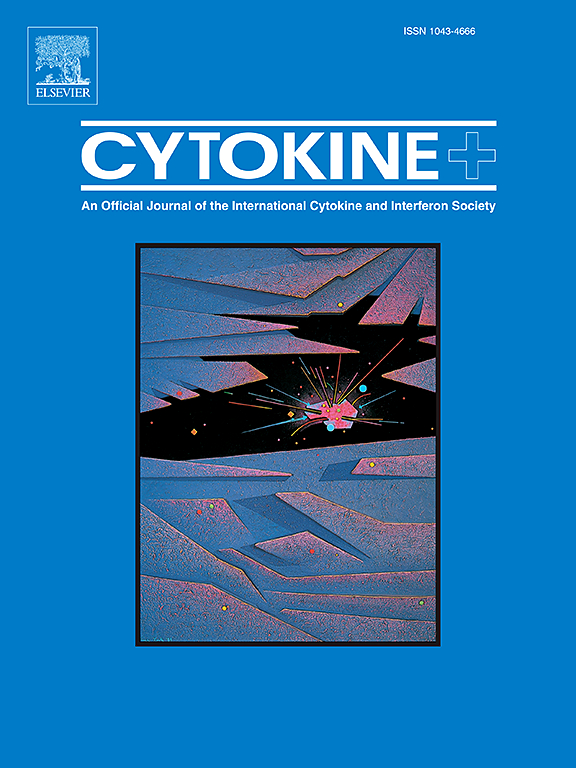The intricate ballet of inflammation and autophagy: Insights from Mycoplasma gallisepticum-infected HD11 cells
IF 3.7
3区 医学
Q2 BIOCHEMISTRY & MOLECULAR BIOLOGY
引用次数: 0
Abstract
Objectives
Mycoplasma gallisepticum (M. gallisepticum) infection often leads to inflammatory damage and immunosuppression. Macrophages play a crucial role as the primary immune defense in chickens, with their inflammatory response and autophagy levels critical. This study aimed to explore the relationship between NLRP3 inflammasome and autophagy in HD11 cells within 12 h after M. gallisepticum infection.
Methods
To investigate this, the HD11 cell model of M. gallisepticum infection was established using the CCK8 (Cell Counting Kit-8) method in this study. The study observed changes in M. gallisepticum-induced inflammation, oxidative stress, and autophagy levels through various methods including transmission electron microscopy (TEM), RT-qPCR, ELISA (enzyme linked immunosorbent assay), 2′,7′-dichlorodihydrofluorescein diacetate (DCFH-DA), JC-1 and Western blot.
Results
TEM revealed that the nuclear membrane was damaged, the number of damaged mitochondria increased, and autophagosomes were detected at 4 and 8 h after M. gallisepticum infection. ELISA and RT-qPCR results indicated that M. gallisepticum induced oxidative stress and inflammation damage. Fluorescence analysis demonstrated an increase in intracellular reactive oxygen species (ROS) content and a continuous decrease in mitochondrial membrane potential (MMP) post-M. gallisepticum infection. Additionally, the NF-κB/NLRP3 signaling pathway remained consistently activated during M. gallisepticum infection. After M. gallisepticum infection, autophagy levels decreased significantly at 1 and 12 h, but increased significantly at 4 and 8 h.
Conclusions
M. gallisepticum infection triggers the activation of the NLRP3 inflammasome in HD11 cells, leading to inflammatory damage. Additionally, it causes fluctuations in autophagy levels, characterized by a wavy pattern of decrease, increase, and subsequent decrease.
炎症和自噬的复杂芭蕾:来自鸡脓毒支原体感染HD11细胞的见解
目的鸡败支原体感染可引起炎症损伤和免疫抑制。巨噬细胞在鸡的初级免疫防御中起着至关重要的作用,它们的炎症反应和自噬水平至关重要。本研究旨在探讨鸡脓毒杆菌感染后12 h内HD11细胞NLRP3炎性小体与细胞自噬的关系。方法本研究采用CCK8 (cell Counting Kit-8)方法建立鸡芽孢杆菌感染HD11细胞模型。本研究通过透射电镜(TEM)、RT-qPCR、ELISA(酶联免疫吸附法)、2′,7′-二氯双氢荧光素(DCFH-DA)、JC-1和Western blot等多种方法观察鸡链球菌诱导的炎症、氧化应激和自噬水平的变化。结果在感染后4 h和8 h,小鼠核膜损伤,线粒体损伤数量增加,检测到自噬体。ELISA和RT-qPCR结果表明,鸡脓毒杆菌可诱导氧化应激和炎症损伤。荧光分析显示细胞内活性氧(ROS)含量增加,线粒体膜电位(MMP)持续下降。体疾病感染。此外,NF-κB/NLRP3信号通路在鸡芽孢杆菌感染期间保持持续激活。鸡脓毒杆菌感染后1、12 h自噬水平显著降低,4、8 h自噬水平显著升高。鸡败菌感染触发HD11细胞中NLRP3炎性体的激活,导致炎症损伤。此外,它引起自噬水平的波动,其特征是减少、增加和随后减少的波浪形模式。
本文章由计算机程序翻译,如有差异,请以英文原文为准。
求助全文
约1分钟内获得全文
求助全文
来源期刊

Cytokine
医学-免疫学
CiteScore
7.60
自引率
2.60%
发文量
262
审稿时长
48 days
期刊介绍:
The journal Cytokine has an open access mirror journal Cytokine: X, sharing the same aims and scope, editorial team, submission system and rigorous peer review.
* Devoted exclusively to the study of the molecular biology, genetics, biochemistry, immunology, genome-wide association studies, pathobiology, diagnostic and clinical applications of all known interleukins, hematopoietic factors, growth factors, cytotoxins, interferons, new cytokines, and chemokines, Cytokine provides comprehensive coverage of cytokines and their mechanisms of actions, 12 times a year by publishing original high quality refereed scientific papers from prominent investigators in both the academic and industrial sectors.
We will publish 3 major types of manuscripts:
1) Original manuscripts describing research results.
2) Basic and clinical reviews describing cytokine actions and regulation.
3) Short commentaries/perspectives on recently published aspects of cytokines, pathogenesis and clinical results.
 求助内容:
求助内容: 应助结果提醒方式:
应助结果提醒方式:


